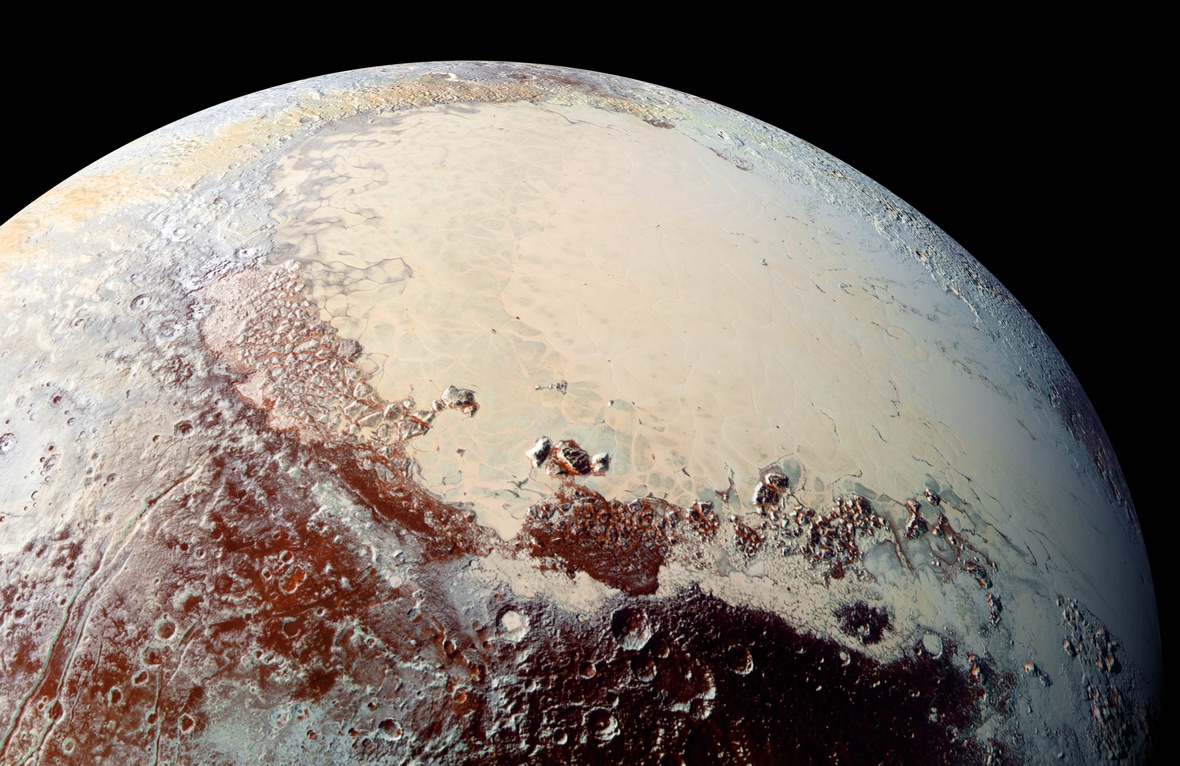
NASA is thinking about going back to Pluto, this time to stay for a while.
The space agency has funded the Southwest Research Institute (SwRI) to conduct a wide-ranging study into a possible Pluto orbiter mission. The study will lay out design and instrument requirements and investigate the feasibility and costs of the potential project, SwRI representatives said.
SwRI leads NASA's New Horizons mission, which zoomed past Pluto in July 2015, snapping the first-ever up-close photos of the dwarf planet. The historic flyby revealed Pluto to be a surprisingly diverse and complex world, with 2-mile-high (3.2 kilometers) mountains of water ice and vast plains of nitrogen ice, among other features.
Related: Destination Pluto: NASA's New Horizons Mission in Pictures
On Jan. 1 of this year, New Horizons conducted a second flyby, this time of the small Kuiper Belt object (KBO) 2014 MU69, which is informally known as Ultima Thule. (The Kuiper Belt is the ring of frigid bodies beyond Neptune's orbit, and Pluto is the belt's most famous resident.)
"We’re excited to have this opportunity to inform the decadal survey deliberations with this study,” study team leader Carly Howett of SwRI said in a statement. "Our mission concept is to send a single spacecraft to orbit Pluto for two Earth years before breaking away to visit at least one KBO and one other KBO dwarf planet."
The team has been working on its orbiter concept for a while.
Get the Space.com Newsletter
Breaking space news, the latest updates on rocket launches, skywatching events and more!
"In an SwRI-funded study that preceded this new NASA-funded study, we developed a Pluto system orbital tour, showing the mission was possible with planned-capability launch vehicles and existing electric propulsion systems," SwRI's Alan Stern, principal investigator of the New Horizons mission and the earlier SwRI-funded study, said in the same statement.
"We also showed it is possible to use gravity assists from Pluto's largest moon, Charon, to escape Pluto orbit and to go back into the Kuiper Belt for the exploration of more KBOs like MU69 and at least one more dwarf planet for comparison to Pluto," Stern added.
The newly announced NASA funding doesn't mean a Pluto orbiter will definitely be on the space agency's docket, however. NASA has sponsored nine other mission studies as well, to get ready for the next Planetary Science Decadal Survey.
The decadal survey is performed every 10 years by the U.S. National Research Council to help set NASA's robotic exploration priorities. Work on the next survey is set to begin in 2020. (The most recent Planetary Science Decadal Survey covers the years 2013 to 2022.)
New Horizons is in good health and has enough fuel to fly by yet another KBO, if NASA approves another mission extension, Stern has said. (The Ultima Thule flyby was the centerpiece of the current extended mission.)
- We Just Flew Past a Kuiper Belt Object. Here's Why We Should Do It Again.
- Pluto Flyby Anniversary: The Most Amazing Photos from NASA's New Horizons
- Ultima Thule in Pictures: Flyby Views of 2014 MU69 by New Horizons
Mike Wall's book about the search for alien life, "Out There" (Grand Central Publishing, 2018; illustrated by Karl Tate), is out now. Follow him on Twitter @michaeldwall. Follow us on Twitter @Spacedotcom or Facebook.
Join our Space Forums to keep talking space on the latest missions, night sky and more! And if you have a news tip, correction or comment, let us know at: community@space.com.

Michael Wall is a Senior Space Writer with Space.com and joined the team in 2010. He primarily covers exoplanets, spaceflight and military space, but has been known to dabble in the space art beat. His book about the search for alien life, "Out There," was published on Nov. 13, 2018. Before becoming a science writer, Michael worked as a herpetologist and wildlife biologist. He has a Ph.D. in evolutionary biology from the University of Sydney, Australia, a bachelor's degree from the University of Arizona, and a graduate certificate in science writing from the University of California, Santa Cruz. To find out what his latest project is, you can follow Michael on Twitter.









